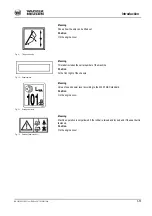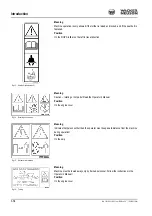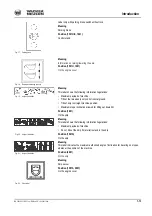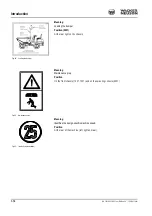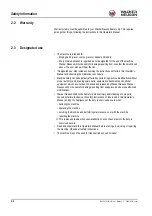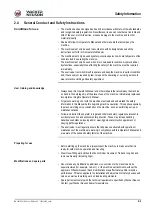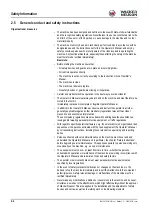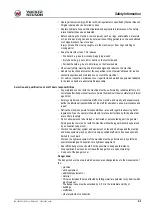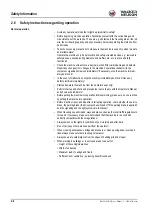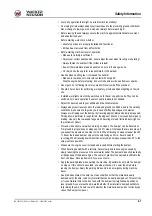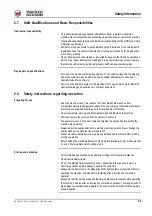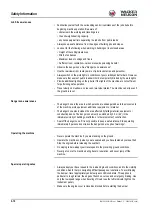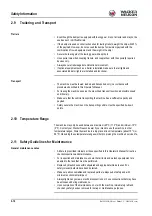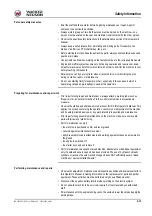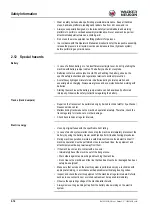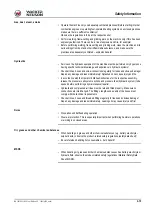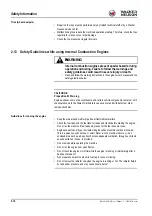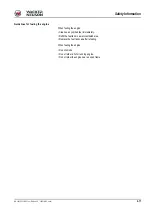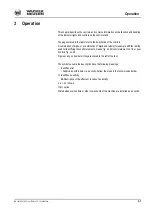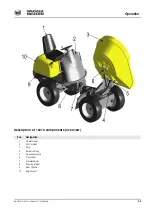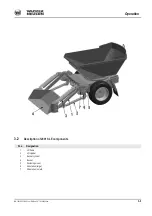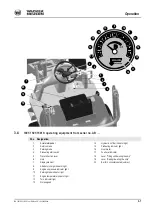
2-10
BA 1001/1501/2001 us – Edition 3.3 * * 12001b210_us.fm
Safety Information
Job Site awareness
• Familiarize yourself with the surroundings and circumstances of the job site before
beginning machine operation. Be aware of:
• obstacles in the working and traveling area
• the soil weight-bearing capacity
• any necessary barriers separating the job site from public roads
• Always keep a safe distance from the edges of building pits and slopes.
• Look out for the following when working in buildings or in enclosed areas:
• Height of the ceiling/clearances
• Width of entrances
• Maximum load of ceilings and floors
• Sufficient room ventilation—carbon monoxide poisoning hazard!
• Observe the danger zone. See “Danger zone awareness”.
• Use the rearview mirror to stay aware of job site obstacles and personnel.
• Always switch on the work lights in conditions of poor visibility and after dark. However,
make sure that users of public roads will not be temporarily blinded by the work lights.
• Provide additional lighting on the job site if the lights of the machine are not sufficient
for performing safe operation.
• Travel slowly on meadows, on leaves or wet steel plates. The machine can slip even if
the ground is level.
Danger zone awareness
• The danger zone is the area in which persons are endangered due to the movements
of the machine, work equipment, additional equipment, or material.
• The danger zone also includes the area affected by falling material, equipment or
construction debris. The danger zone must be extended by 0.5 m (20”) in the
immediate vicinity of buildings, scaffolds, or other elements of construction.
• Seal off the danger zone if it is not possible to keep a safe distance. Stop operating
immediately if persons do not leave the danger zone in spite of warnings!
Operating the machine
• Never operate the machine if you are standing on the ground.
• Operate the machine only when you are seated and you have fastened your seat belt.
Stop the engine before releasing the seat belt.
• On sloping terrain, adapt your travel speed to the prevailing ground conditions.
• Never get on or off a machine during travel or operation, and never jump off the
machine.
Special operating notes
• Always adapt your travel speed to the road and ground conditions, and to the visibility
conditions. Ask for help in navigating difficult passages or obstacles. To avoid tipping
the dumper, travel appropriately and slowly as conditions dictate. This applies in
particular to rough terrain, the edges of trenches, curves and emergency braking. Use
only the low speed range when traveling off-road (see the turtle indicator light on the
instrument panel).
• Make sure the engine cover is closed and locked before starting the dumper.


